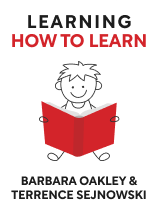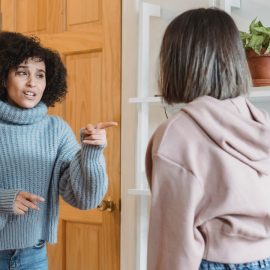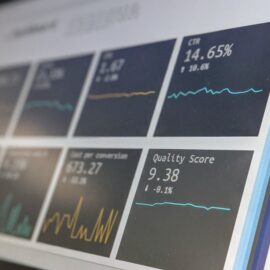

This article is an excerpt from the Shortform book guide to "Learning How to Learn" by Barbara Oakley and Terrence Sejnowski. Shortform has the world's best summaries and analyses of books you should be reading.
Like this article? Sign up for a free trial here .
What is Learning How to Learn about? Can it help you learn anything effectively?
In Learning How to Learn, Barbara Oakley asserts that anyone can master any subject by applying good study techniques. You don’t have to be gifted or have natural abilities in a particular subject to excel at it. And Oakley should know: She failed math in high school, but later overcame her fear of numbers and eventually earned a doctorate degree in engineering.
Keep reading to learn more about this best-selling book.
Learning How to Learn
In Learning How to Learn, Barbara Oakley and co-author Terrence Sejnowski explain study tactics that you can use to excel in whatever you’re learning. To make them immediately applicable, we’ve organized our guide as a list of actionable study tips, and we’ve cross-referenced the authors’ advice with other sources, such as Why We Sleep, which discusses the importance of sleep to learning, and the work of psychologist Edward de Bono, who advises on how to alternate between modes of thinking to get the most out of your learning.
Oakley attests to this based on personal experience. From childhood through her career in the US Army, she struggled with technical subjects. However, recognizing the benefits of technical competence, she set out to overcome her technophobia and eventually earned a doctorate in systems engineering.
In Learning How to Learn, she teamed up with Dr. Terrence Sejnowski to dig into the neuroscience behind how you learn and relate it to practical study techniques. In our book guide, we’ve extracted their key study tips and techniques to make them even more accessible and grouped the tips according to the neurological concepts that they’re based on.
The book was originally targeted at pre-teen students, but the authors’ study tips, and the neuroscience behind them, are applicable to students of any age. We’ve prepared our guide in a style suited to high school and college students.
(Shortform note: Learning How to Learn is, in some ways, a follow-up to Oakley’s earlier book A Mind for Numbers. Learning How to Learn covers a slightly narrower scope, but it goes into more detail about the neurological basis of learning. For example, in A Mind for Numbers, Oakley discusses the concept of chunking and the make-up of habits, which she leaves out of Learning How to Learn. But in A Mind for Numbers, she doesn’t discuss the growth of dendritic spines on neurons, which, as we explain, is an important concept in Learning How to Learn.)
Strengthen Your Learning by Strengthening Your Synapses
Oakley and Sejnowski suggest a number of learning strategies and tips that take advantage of the way information is stored in your brain. Oakley and Sejnowski’s first tip for improving your learning by building more connections is to embrace multisensory learning because the more senses you engage in learning something, the better you’ll learn it. Regardless of your learning style, you’ll learn it even better if you see it and hear it than if you only receive it in one style.
Another tip Oakley and Sejnowski provide is that you can more easily add things to your memory by relating them to things already in your memory through metaphors. First and foremost, they recommend you create mental pictures to represent the concept you’re learning. The authors also note that you can use acronyms or mnemonics to create metaphors.
As another tip, when you read a book (or an article, a chapter, or any other reading assignment), Oakley and Sejnowski recommend that you first skim through it, looking at headings and pictures to get a general sense of what it’s about before you read it in detail.
Oakley and Sejnowski’s final tip on how to take advantage of your brain’s information storage processes is to introduce variety into your studies:
- Study in a variety of locations.
- Interleave your study problems. This means practicing an assortment of problems covering the full range of problem-solving techniques you’ve learned, instead of only practicing one technique at a time.
- Study a completely different subject for a while.
Stimulate Learning by Stimulating Neuron Growth
The authors’ first tip for promoting neuron growth is to exercise between study sessions. They assert that interspersing exercise with your studies can make your studying more effective because physical fitness promotes neural health.
Oakley and Sejnowski’s next tip is that the most effective form of studying is active recall. Active recall consists of deliberately reproducing or rephrasing ideas from memory, rather than passively rereading them from your notes or other sources.
Another tip is to study a little every day, rather than cramming before a test or trying to do all your studying in one big session. They call this “spaced repetition.”
The authors’ final tip on how to encourage neuron growth is to get enough sleep.
Manipulate Your Modes of Thinking to Maximize Your Learning
Oakley and Sejnowski’s first tip related to modes of thought is that you should alternate between periods of intense mental focus and mental rest breaks. Their second recommendation is to tackle the most difficult problems or subjects first when you’re taking a test, doing homework, or studying.
Make Efficient Use of Your Memory
Oakley and Sejnowski have two recommendations related to leveraging your memory: eliminate distractions while you’re studying and avoid multitasking (shifting your focus from one task to another).

———End of Preview———
Like what you just read? Read the rest of the world's best book summary and analysis of Barbara Oakley and Terrence Sejnowski's "Learning How to Learn" at Shortform .
Here's what you'll find in our full Learning How to Learn summary :
- How anyone can learn to master any subject
- Study tactics that you can use to excel in whatever you’re learning
- A look at the neuroscience behind how you learn






